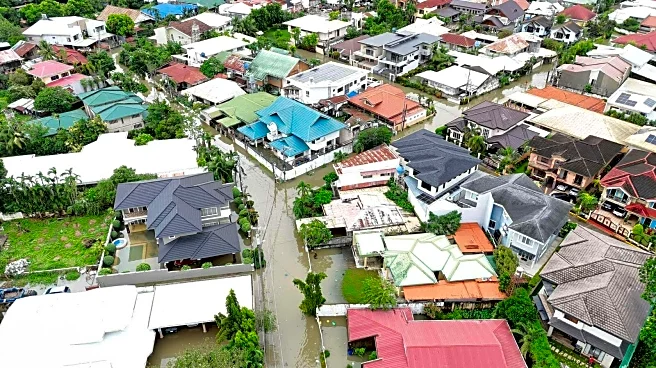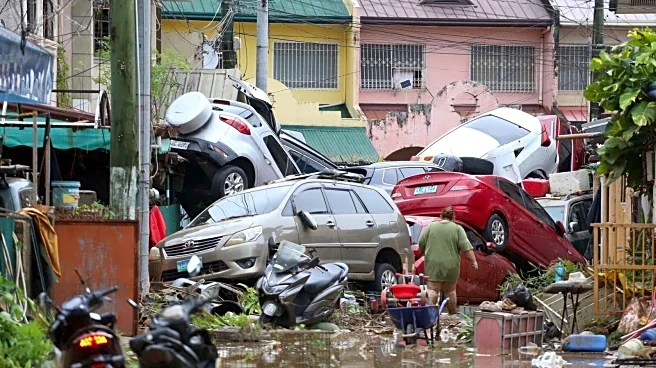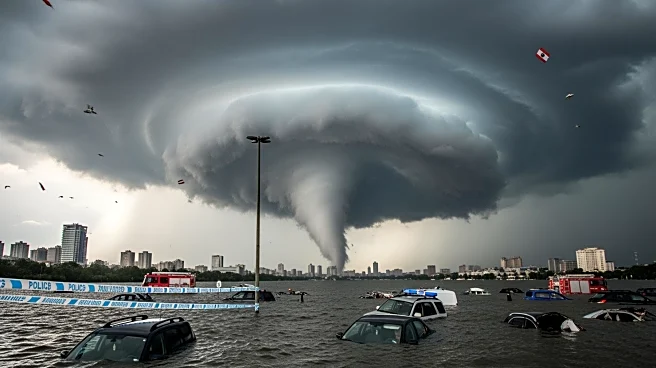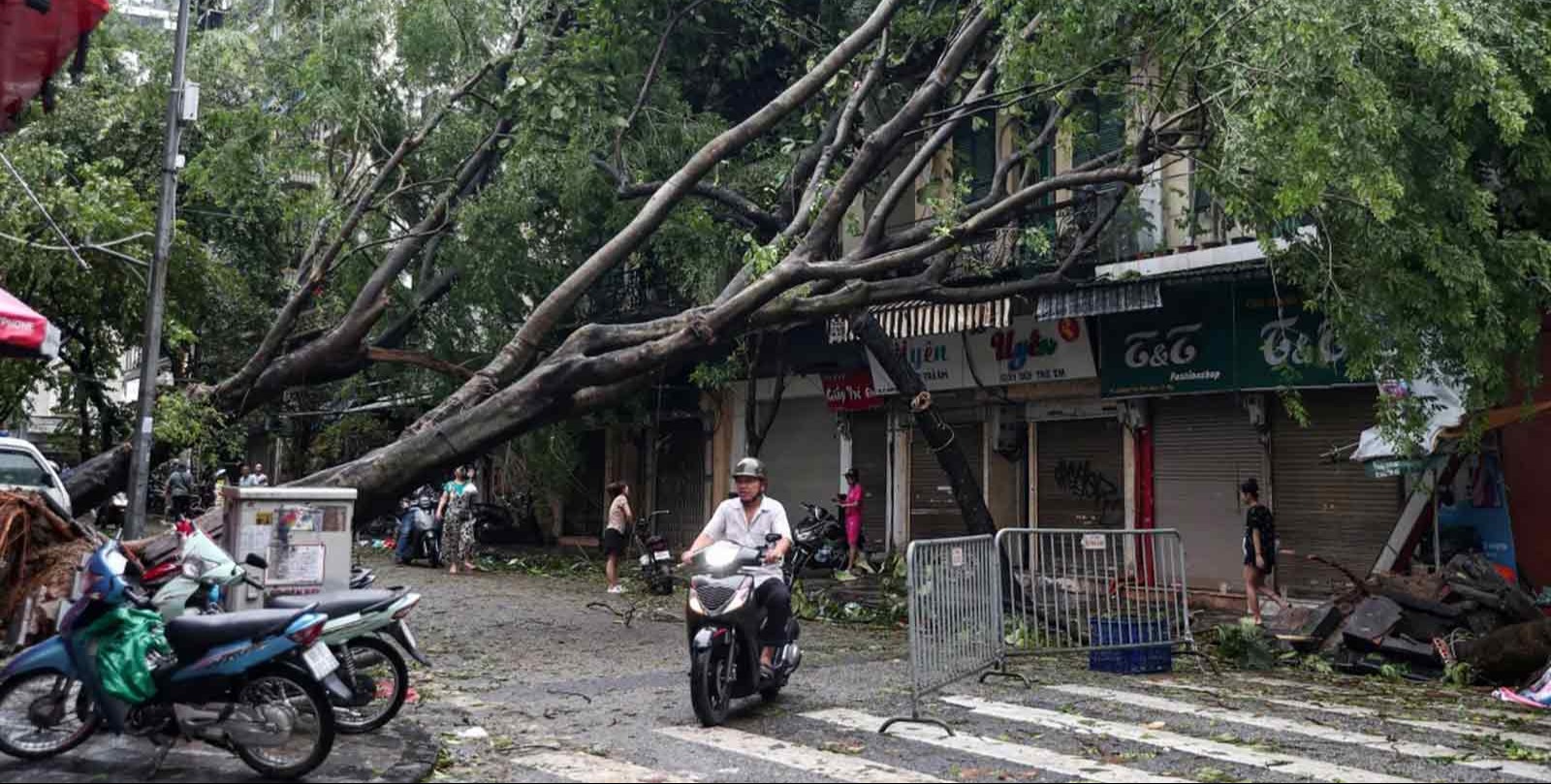What's Happening?
Typhoon Kalmaegi has caused significant devastation in the central Philippines, resulting in at least 21 deaths and displacing nearly 400,000 people. The typhoon, known locally as Tino, brought heavy rains
and widespread flooding, particularly affecting the province of Cebu. Many residents were trapped on rooftops as floodwaters rose, and at least 12 people died in a village in Cebu City due to flash floods. The typhoon, which slightly weakened as it moved through the region, packed maximum winds of 130 kilometers per hour and gusts up to 180 kilometers. It is expected to move over the South China Sea and potentially impact central Vietnam. The Philippines, which experiences an average of 20 storms and typhoons annually, is still recovering from a recent earthquake that struck the central region.
Why It's Important?
The impact of Typhoon Kalmaegi highlights the vulnerability of the Philippines to natural disasters, exacerbating the challenges faced by the nation in terms of disaster preparedness and response. The displacement of nearly 400,000 people and the significant loss of life underscore the urgent need for effective evacuation and emergency management strategies. The typhoon's disruption of transportation, with over 300 flights canceled, also affects the country's connectivity and economic activities. As the Philippines is one of the world's most disaster-prone nations, the recurring nature of such events poses ongoing threats to its infrastructure, economy, and population.
What's Next?
As Typhoon Kalmaegi moves towards the South China Sea, there is a high risk of life-threatening storm surges in low-lying and coastal communities. Authorities are likely to continue monitoring the situation closely and may issue further evacuation orders to mitigate the impact on vulnerable populations. The focus will also be on providing relief and support to those affected, as well as assessing the damage to infrastructure and homes. The international community may offer assistance, and local governments will need to prioritize rebuilding efforts and improving disaster resilience.












